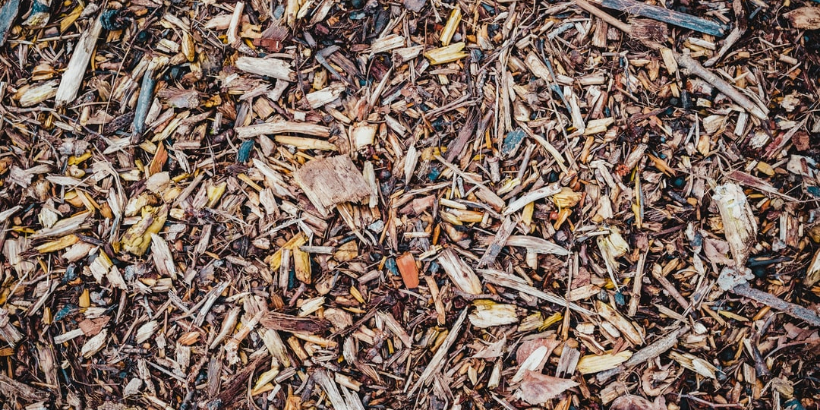Soil Remediation: Restore Your Soil with Woodchip

Similarly, in urban soils where there is heavy foot traffic, and little in the way of soil management, compaction is a big challenge. It has the biggest impact on urban trees, which often already have limited soil and water available. In many cities the ever-growing financial pressure of managing street trees has led contractors to pave ever closer to the trunk. However, even where there is still some soil around the tree, there are few options available for effective soil management, given the very tight spaces and lack of available suitable machinery. A study at Morton Arboretum in Illinois concluded that, ‘compost top dressings and wood chip mulches should be used as soil management techniques for trees growing in compacted urban soils,’ and that, ‘it is reasonable to expect that combining wood chips and composts may have even greater benefit for improving soil quality for urban trees.’9
Erosion
Many of the studies done on using woodchip for erosion control have looked at extreme situations, such as post forest fires or after large areas of trees have been clear-felled. While this is not a replica for most farm and garden scenarios, we can use the knowledge and insight gained from this research to help on smaller-scale erosion challenges, like growing vegetables on sloping land or protecting cultivated arable land.
When we talk about degraded soils, we normally mean that they have lost structure and organic matter. Usually, this is associated with heavy and continuous cropping. In a reflection of how a soil builds from nothing with the gradual undisturbed addition of organic material and subsequent increase in life, if we cultivate and grow crops without adding organic matter, we will gradually reduce that soil back to its mineral content and structure. Without the carbon, air and water held within the soil that are needed to support life, eventually it can become a desert.
Changes in agricultural practice tend to have a greater effect on soils in drier climates where quick recolonisation of weeds over bare soil is less likely. On slopes, this can quickly lead to soil loss and further challenges of establishing plant cover. Using a woodchip mulch significantly reduces that erosion and helps to build soil structure and moisture-holding capacity of the soil. In a study in northeast Spain looking at gypseous and calcareous soil post forest fires, a thin mulch, of between 0.5 and 2 centimetres (1⁄5 and 3⁄4 inch), was shown to considerably reduce runoff both of water and sediment.10 They found that you needed to mulch at least 60 percent of the site and recommended mixing seeds of a suitably adapted plant species into the woodchip. In a farming situation, you could potentially mulch with a thin layer of RCW or composted woodchip on land that was at risk of wind or water erosion. This could be done post-harvest if weather conditions allowed, though it would be tricky in wetter climates after a late-harvested crop. Depending on the following planting, a quick-growing cover crop seed could be added into the woodchip.
Notes
- ‘Innovative Uses of Compost: Bioremediation and Pollution Prevention’, United States Environmental Protection Agency (October 1997), https:// www.epa.gov/sites/production/files/2015-08/documents/bioremed.pdf.
- Ugochukwu C. Okafor and Amechi S. Nwankwegu, ‘Effect of Woodchips on Bioremediation of Crude Oil-Polluted Soil’, British Microbiology Research Journal 15, no. 4 (2016), http://doi.org/10.9734/BMRJ/2016/27027.
- K. Robichaud Girard et al., ‘Local Fungi, Willow and Municipal Compost Effectively Remediate Petroleum-contaminated Soil in the Canadian North,” Chemosphere 220 (April 2019): 47–55, https://doi.org/10.1016/j .chemosphere.2018.12.108.
- W. Spisak et al., ‘Using Wood Chips for the Protection of Plants and Soil from the Harmful Effects of Road Salt’, European Journal of Wood and Wood Products 78 (2020): 1209–19, https://link.springer.com/article/10.1007/s00107-020-01563-4; J. Miller et al., ‘Surface Soil Salinity and Soluble Salts after 15 Applications of Com- posted or Stockpiled Manure with Straw or Wood-Chips’, Compost Science & Utilization 25, no. 1 (2017): 36–47, http://doi.org/10.1080/1065657X.2016.1176968.
- M. Shaygan et al., ‘The Effect of Soil Physical Amendments on Reclamation of a Saline-sodic Soil: Simulation of Salt Leaching Using HYDRUS-1D’, Soil Research 56, no. 8 (2018): 829–45, https://doi.org/10.1071/SR18047.
- S. Brown et al., ‘Effect of Biosolids Processing on Lead Bioavailability in an Urban Soil’, Journal of Environmental Quality 32, no. 1 ( January 2003): 100–8, https://doi.org/10.2134/jeq2003.1000.
- L.A. Schipper et al., ‘Denitrifying Bioreactors: An Approach for Reducing Nitrate Loads to Receiving Waters’, Ecological Engineering 36, no. 11 (Novem- ber 2010): 1532–43, http://doi.org/10.1016/j.ecoleng.2010.04.008.
- E.C. Wolf, E. Rejmánková and D.J. Cooper, ‘Wood Chip Soil Amendments
in Restored Wetlands Affect Plant Growth by Reducing Compaction and Increasing Dissolved Phenolics’, Restoration Ecology 27, no. 5 (November 2019): 1128–36, https://doi.org/10.1111/rec.12942. - B.C. Scharenbroch and G.W. Watson, ‘Wood Chips and Compost Improve Soil Quality and Increase Growth of Acer rubrum and Betula nigra in Compacted Urban Soil’, Arboriculture and Urban Forestry 40, no. 6 (2014): 319–31, https:// www.researchgate.net/publication/288097189_Wood_chips_and_compost _improve_soil_quality_and_increase_growth_of_Acer_rubrum_and _Betula_nigra_in_compacted_urban_soil.
- J. León et al., ‘Effectiveness of Wood Chips Cover at Reducing Erosion in Two Contrasted Burnt Soils’, Zeitschrift für Geomorphologie: Supplementary Issue 57, no. 1 (2013): 27–37, http://doi.org/10.1127/0372-8854/2012/S-00086.
